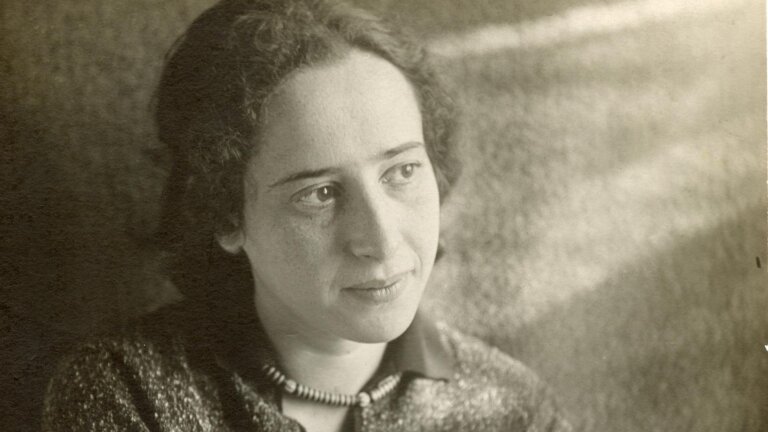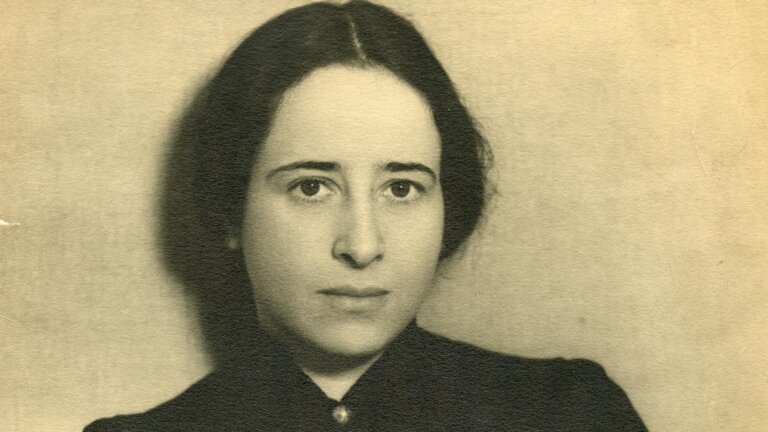Scholar Roger Berkowitz shares how Hannah Arendt saw civil disobedience as a collective and political act that renews democracy by holding power accountable to justice and constitutional principles.
“Civil disobedience arises when a significant number of citizens have become convinced either that the normal channels of change no longer function, and grievances will not be heard or acted upon, or that, on the contrary, the government is about to change and has embarked upon and persists in modes of action whose legality and constitutionality are open to grave doubt.”
—Hannah Arendt
In 1970, Hannah Arendt wrote an essay called “Civil Disobedience” that would be published in an anthology called Crises of the Republic. Arendt had seen the student protests of the 1960s, and in that time of intense political division and democratic crisis, she came to see civil disobedience not as threat to democracy, but as one of its most vital expressions. From the American Revolution to the Civil Rights Movement to contemporary protests against immigration raids and bureaucratic and executive overreach, acts of civil disobedience are central to democratic renewal.
Activists from the group “No Sleep for ICE” disrupt immigration enforcement operations to oppose what they see as cruel and inhumane arrests of longtime, law-abiding residents. Student encampments at universities seek to block access to public spaces and unlawfully occupy buildings to demand an end to U.S. military aid to Israel. And after the police killing of George Floyd, hundreds of thousands illegally shut down highways, bridges and business districts in an urgent call for justice.
As Hannah Arendt argued during the outbreak of civil disobedience in the 1960s, such acts of civil disobedience are not peripheral to democratic life, but lie at the very heart of American democracy.
“Power springs up whenever people get together and act in concert, but it derives its legitimacy from the initial getting together rather than from any action that then may follow. Legitimacy, when challenged, bases itself on an appeal to the past, while justification relates to an end that lies in the future.”
—Hannah Arendt
For Arendt, civil disobedience is not lawlessness. Yes, civil disobedients do break laws—yet they do so in defense of lawfulness itself; their aim is to renew the promise of constitutional democracy.
That’s why civil disobedience must remain civil. It must be nonviolent and faithful to the idea of lawfulness, not contemptuous of it. To the extent a university employs violence to clear protesters, they may be justified in doing so, but they will lose their legitimacy. And when protesters enlist their power to violate the rights and safety of others through intimidation and actual violence, they too sacrifice their legitimacy.
Arendt distinguished civil disobedience from the solitary conscientious resistance of Henry David Thoreau. Thoreau saw civil disobedience as an individual act of conscience—a moral refusal to engage in injustice. Arendt, by contrast, emphasized that civil disobedience is never the work of a lone individual. It is not moral, but political, collective and public.
She described civil disobedience as the act of citizens breathing together—acting in concert to defend constitutional principles and the spirit of the law.
Arendt took from Thoreau a strong moral spur to politics, just as Martin Luther King Jr. did when he called for “nonviolent direct action.” In his “Letter from Birmingham Jail” in 1963, King wrote that “we must see the need of having nonviolent gadflies to create the kind of tension in society that will help men rise from the dark depths of prejudice and racism to the majestic heights of understanding and brotherhood.”
Following Mahatma Gandhi and Martin Luther King Jr., Arendt saw civil disobedience not as self-purification, but as an essentially political action. It aims not to escape complicity in injustice, but to actualize a more just democracy.
Civil disobedience, for Arendt, is the action of “organized minorities,” who, even in the face of majority rule, insist on holding power accountable to principle. In a constitutional democracy grounded in consent, dissent is not treason—it is the foundation of political consent.
Arendt’s understanding of civil disobedience is rooted in a specifically American politics grounded in consent. She understood that “dissent implies consent, and is the hallmark of free government; one who knows that he may dissent knows that he somehow consents when does not dissent.” Her political thinking places civil disobedience not outside the Constitution, but squarely within its spirit. That is why Arendt suggested that there should be a Constitutional Amendment explicitly guaranteeing the right to civil disobedience.
Arendt also reminded us that democratic rule is more than majority rule. There are moments when democracy will bend towards conformity and the tyranny of the majority. That is why democracy requires of its citizens more than simply voting every two years. Arendt held up civil disobedience as a way of inspiring in citizens the virtue necessary to resist the conformity and passivity of the tyrannical moments of democratic majority rule.
Arendt’s constitutionalism began with a stark insight: law alone cannot constrain political power. Courts have no armies or executive agencies to implement their rulings. Constitutional rights are not self-executing. When freedom is under threat, only organized power—plural, public and organized—can resist domination. While many cling to the idea that constitutional doctrines and judicial intervention are sufficient guardians of freedom, Arendt reminded us that any meaningful defense of freedom needs to be political. Civil disobedience is, for Arendt, one of the core constituent powers that could restrain tyranny in the United States.
The political dysfunction of our present moment reflects contradictory impulses. On one side, decades of bureaucratic inertia have convinced many that normal channels of democratic change no longer work, leading to calls for a more politicized judiciary and civil service. On the other, many think there is growing alarm that unbridled executive power has contempt for judicial rulings, bureaucratic expertise and constitutional restraints.
At times, protests have devolved into lawless riots rather than political acts aimed at defending and reinvigorating lawful government. That is why, as Arendt reminds us, civil disobedience must remain civil. Its purpose is not to tear down the constitutional order, but to renew it.
What threatens democracy today is not too much civil disobedience, but too little belief in the power of citizens to act together in defense of freedom. Civil disobedience is not a rejection of law—it is a courageous act of fidelity to law. It is how a free people remind one another that power must serve common sense, neighborliness and justice—not merely democratic power.
Hannah Arendt called civil disobedience one of the core constitutional powers of American democracy. It is how citizens take responsibility for the world they share. At a time when our institutions are weakened and civic trust is eroding, Arendt’s lesson is clear: the strength of democracy lies not just in majority rule, but in the courage and willingness of citizens to speak, to dissent and to act collectively.
The views and opinions expressed in this article are those of the writer.


















